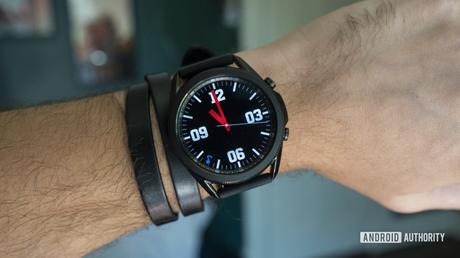
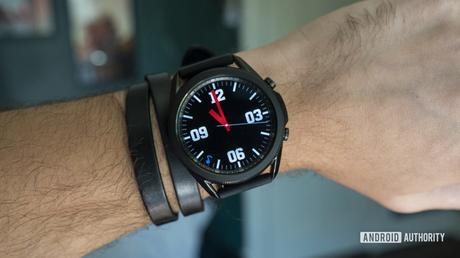


Opinion from
Jimmy Westenberg
When Google launched Android Wear in 2014, it did so with the help of two smartphone OEMs who wanted to help launch the smartwatch landscape on Android. The LG G Watch and Samsung Gear Live were the first two watches powered by Android Wear. Shortly after this release, Samsung turned away from the platform and went all-in on its annual operating system, Tizen. Every Samsung smartwatch since then has run Tizen instead of Google's Wear OS.
Rumor has it This could change soon. I'm not going to dig into the validity of the rumor too much, but I want to talk about the underlying question: why would Samsung drop its own operating system for Wear OS? Would the company really benefit from the move? And does Samsung know it would join a sinking ship? Let's talk about it.
Also read: Samsung Galaxy Watch 3 review: the best Android smartwatch
Reasons for a Wear OS-based Galaxy Watch
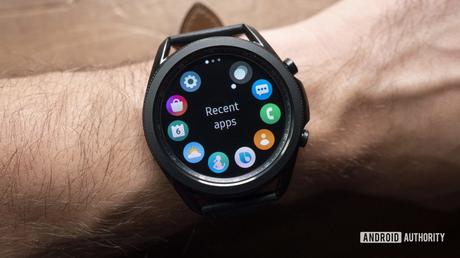
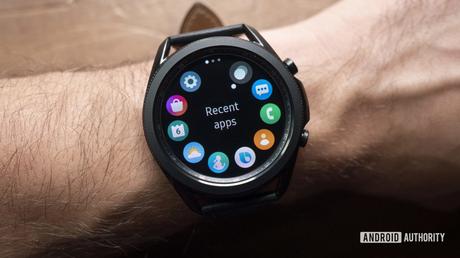
Samsung's current flagship watch, the Galaxy Watch 3, is one of our most popular smartwatches that you can get for your Android phone. But it's not perfect.
Building an operating system is difficult, and creating a thriving app ecosystem is one of the main difficulties facing young platforms. We've seen Fitbit, Garmin, and Samsung in particular, struggle in this area. Fire up your new Galaxy Watch, head over to the App Store and you will find a surprising lack of quality apps to download for your smartwatch. The basics may be there, but good luck finding plenty of decent third-party apps that you actually want to use.
Wear OS is way ahead of Tizen in this area. It's not as comprehensive as Apple's WatchOS, for example (more on that later), but it's hands down in a better place. If Samsung were to use Wear OS, it wouldn't have to focus as much on the lack of an app ecosystem. This is now Google's problem.
This is one of the main reasons Apple had so much success with the Apple Watch. If you own an iPhone (which you should do when you buy an Apple Watch), chances are almost all of the mainstays of your smartphone app are available on your Apple Watch too. It's an important part of smartwatches that can easily be taken for granted.
Switching to Wear OS means Google would do the dirty work while Samsung could focus some of its resources elsewhere.
But Samsung has been working on Tizen for years. Why would it want to stop now? This is exactly why a Wear OS watch would thrive. Samsung has been using Tizen in its watches since 2013. Since then, Samsung has learned many important lessons that it could bring to the Google platform. What if Samsung launched a Wear OS device with not terrible battery life and unique hardware features like a rotating bezel? That would surely attract some people to the platform.
We have seen other companies come up with new features in addition to Wear OS. Take Fossil, which was unhappy with the Wear OS battery restrictions. In collaboration with Google, custom battery modes have been developed that can be used to extend the battery life of your watches. Mobvoi has launched numerous Wear OS watches with secondary energy saving displays. Suunto has launched a Wear OS watch with more fitness features than any other Wear OS watch to date. I am just saying that Samsung can continue to develop new features even though the operating system is not fully controlled.
Connected: The best Wear OS watches: Mobvoi, Suunto, and more
However, since the operating system is not controlled, Samsung has to use some workarounds to make the clocks powered by Tizen work the way we all want them to. When pairing a Galaxy Watch with a non-Samsung smartphone, you'll need to use the Galaxy Wearable app (how to control your watch settings and functions), the Galaxy Watch 3 plug-in (or the appropriate Galaxy Watch plug-in for your device) to install. Samsung Accessory Service App (for file transfers) and Samsung Health for your fitness data. With Wear OS watches, you install the Wear OS app. That's it. It shouldn't come as a surprise, but Wear OS watches just work better with Android phones.
Reasons why Samsung should stick with Tizen
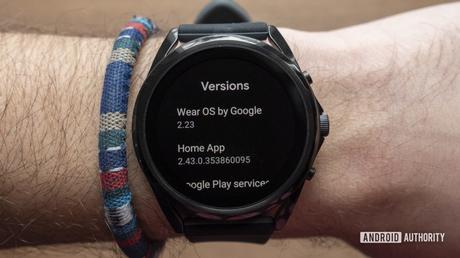

I don't want to use this as a platform to show the fact that Google isn't putting as much effort into the Wear OS as it needs to, or that the Google Fitbit deal could destroy the Wear OS for good. or that Wear OS is constantly being over-developed by other smartwatch platforms, or that ... you get the picture.
Samsung should know that Wear OS is in dire condition. If the company joined the Wear OS ecosystem now, it would join at one of the worst times in the platform's history. It is neglected and its future is uncertain. Even if Samsung continued to launch Galaxy Watch devices with the issues listed above, it would surely be better than introducing a smartwatch with the core operating system almost completely out of control, right? Samsung would have to answer for Google's software problems, and probably no company would want to.
This brings us back to one of our earlier arguments: Samsung controls Tizen, so it has to do the extra work of making it a comprehensive operating system. But that also means Samsung can add or remove anything it wants from the operating system. This includes key elements like Samsung Pay - the company's contactless payment system - which would not be present on the Wear OS device and would be replaced by Google Pay.
Right now, Samsung has full control over what (and what doesn't) go into its smartwatch operating system. With Wear OS, some of that freedom would be lost.
We can't forget about the hardware either. Samsung is currently able to control the hardware that powers its Galaxy Watch devices. If it were to switch to Wear OS, it would be far more limited in terms of SoC choices and other key hardware components.
A limited selection of hardware can also have a negative impact on battery life. Samsung's Tizen watches can easily last a day on a single charge and often last up to the second or third day. Here, too, Samsung controls Tizen, so that the operating system can be adjusted so that the battery life lasts longer. Of all of the Wear OS watches we've tested - even those with custom battery modes and the latest processors - it's rare for one to charge for over a day. Simply put, Wear OS has battery issues and Samsung would plunge into the deep. (What about all the boat analogies today?)
From what I've heard from Wear OS watchmakers, Google is absolutely ready to support OEMs who have good feature ideas for Wear OS. Google wants to improve the platform. With Google owning the software and third party vendors managing the hardware, it's much more difficult to get new, innovative ideas to market on time. Even if a watchmaker wanted to add a particular feature to their Wear OS watch, they had to work closely with Google to get a solution built into the software. A company like Samsung doesn't have to worry as it handles both sides of the development process. If Samsung switched to Wear OS, it would slow down its ability to innovate in a timely manner.
I would not accuse you of either side of this argument. Personally, I think switching to Wear OS would be a dumb step for any business right now - especially one that already has a thriving smartwatch platform. However, much more can happen behind the scenes that we are simply not familiar with.
However, if Samsung chooses to take this step, it would certainly create a divide in the user base. People like Samsung Galaxy Watches, and I think far fewer people want a Samsung Galaxy Watch with Google's software.
Next: The best smartwatch deals we could find
